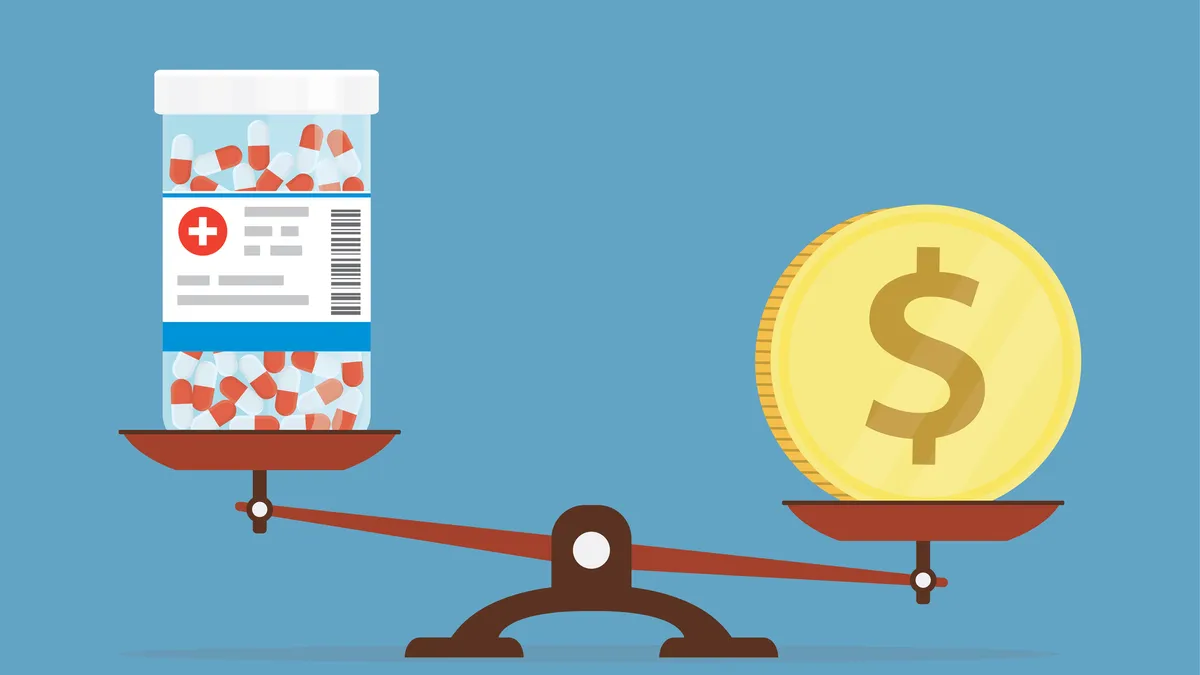The blame for high drug prices is usually pinned squarely on pharma companies, which make headlines when drugs like Hemgenix have $3.5 million price tags and companies battle against Medicare drug pricing negotiations.
Yet, another source of costs is having an impact on the drugs patients use more commonly: Medicare overpayment for generics, where inflated markups can reach as high as 7,000%, according to new analysis published in the Journal of the American Medical Association. In the study, researchers found that private insurers that sponsor Medicare Part D are artificially inflating the costs of certain generic drugs by overpaying pharmacies for them.
The study showed evidence of markups within the Medicare Part D program that had previously been suspected anecdotally, said researchers at Skaggs School of Pharmacy and Pharmaceutical Sciences at the University of California San Diego, West Health and the University of Washington.
Drug reimbursement is designed to cover the costs for pharmacies to acquire and dispense the medicines. However, artificially inflating these costs causes a ripple effect that hits patients, who end up paying more out of pocket because cost sharing is based on point-of-sale reimbursement. When this happens, a patient’s 30% copay would be applied to the inflated drug price, and pharmacy benefit managers, which negotiate reimbursements and manage prescription drug benefits on behalf of health insurers, would recover the profit.
Key findings
Researchers examined spending and reimbursement data for the 50 generic drugs that Medicare Part D spent the most on in 2021 and found that the plans reimbursed generics at a mean of 5.4 times the acquisition costs.
Some of the markups were dramatic. For instance, the cancer drug Imatinib 400 mg had an acquisition cost of just $4.20 per tablet but was reimbursed at a mean of $126.05 per tablet. That’s an average markup of $3,600 per 30-day prescription. Aripiprazole 5 mg, an antipsychotic approved for schizophrenia, bipolar disorder and more, had an acquisition cost of $0.17 per tablet but was reimbursed at a mean of $3.16 per tablet.
The study found that reimbursement rates were highest for Rite Aid, followed by Cigna, CVS Health, Centene, UnitedHealth and Humana.
Why it matters
Medicare is the largest healthcare payer in the U.S. and over 50 million of its beneficiaries are enrolled in Part D plans. Medicare Part D’s total gross spending was $216 billion in 2021, KFF reports. Moreover, 90% of all prescriptions dispensed in the U.S. are for generic drugs, according to the FDA.
And as drug pricing remains in the public spotlight, PBM reform is becoming a hotter topic, with lawmakers setting their sights on legislation that aims to “rein in” PBMs by bringing more transparency to their negotiations and competition in the overall PBM landscape. The Federal Trade Commission is also conducting an inquiry into what it calls these “prescription drug middlemen” and their possible anticompetitive practices











